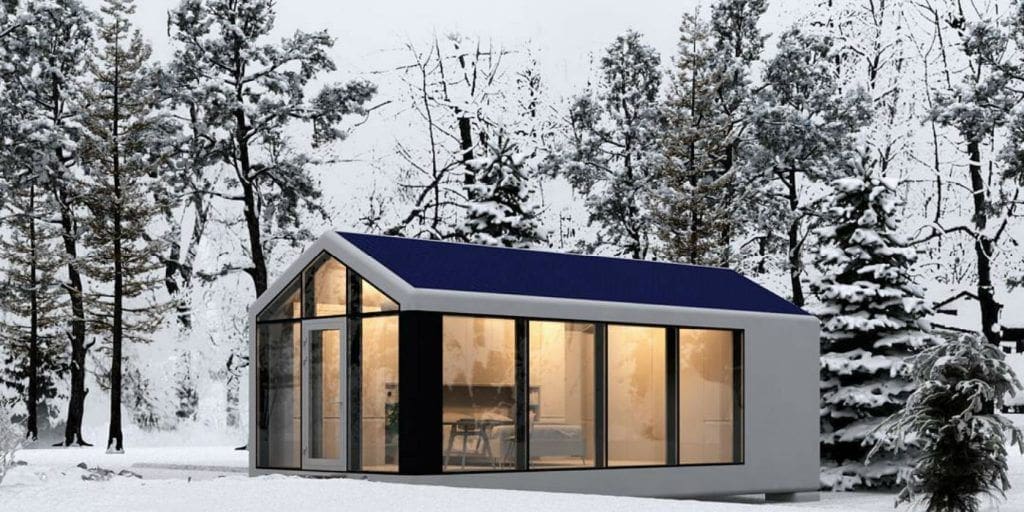PassivDom: 3D printed houses fit for any apocalypse or housing crisis
Housing Crisis. Did you feel that? That’s the sense of uneasiness, the power of two words that divided nation during election season. Let’s slice right through that however and take a look at PassivDom, a Ukrainian homebuilding start-up that uses 3D printing to construct slick, independent modular houses. Building a house is not just a cumbersome process, it’s also an expensive one. PassivDom’s 3D printing robot can print the floor, walls and roof of a 410-square foot model house in just eight hours – that’ll save you building costs.
Windows, doors, electrical systems and plumbing are then later added, with the help of human hands. Once completed, the 3D printed homes are completely mobile and autonomous, much in part to its lack of need to connect to an external electrical grid and plumbing system. Solar panels are kitted out on the roof of the house, supplying power to a built in battery. Water is sourced from collecting and filtering humidity in the air, but if you need a top-up, you can easily add more water to the system. A separate sewage system ensures that these 3D printed houses are completely independent and capable of placement anywhere – perfect for a zombie outbreak, apocalypse, or just a general break away from fellow humans.
The house frame is first printed as a single component using seven axes robots. Carbon fibre, polyurethane, basalt, resin and fibreglass are then all used in the printing process. This mix of materials ensures an extremely durable construction as well as incredible warmth. According to the Guinness Book of Records, the PassivDom “has the best thermal characteristics and is the warmest residential building in the world” – not a bad recommendation to have.
Depending on what model you select, build times can vary. Design and production of houses with custom specs can take up to a month, but a premade PassivDom house can be shipped out in a day. PassivDoms are unfortunately unavailable here in New Zealand, but who knows, maybe in the future you’d be able to download a copy of the specs and print it off yourself here.

